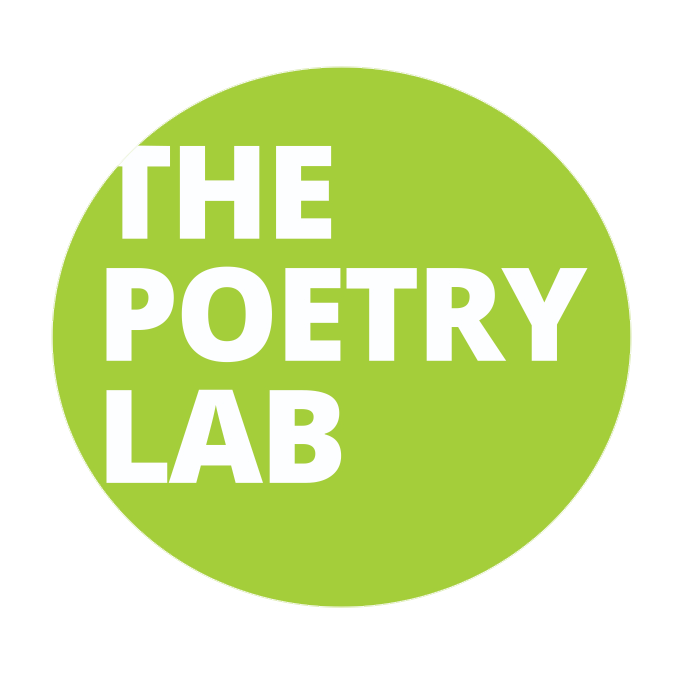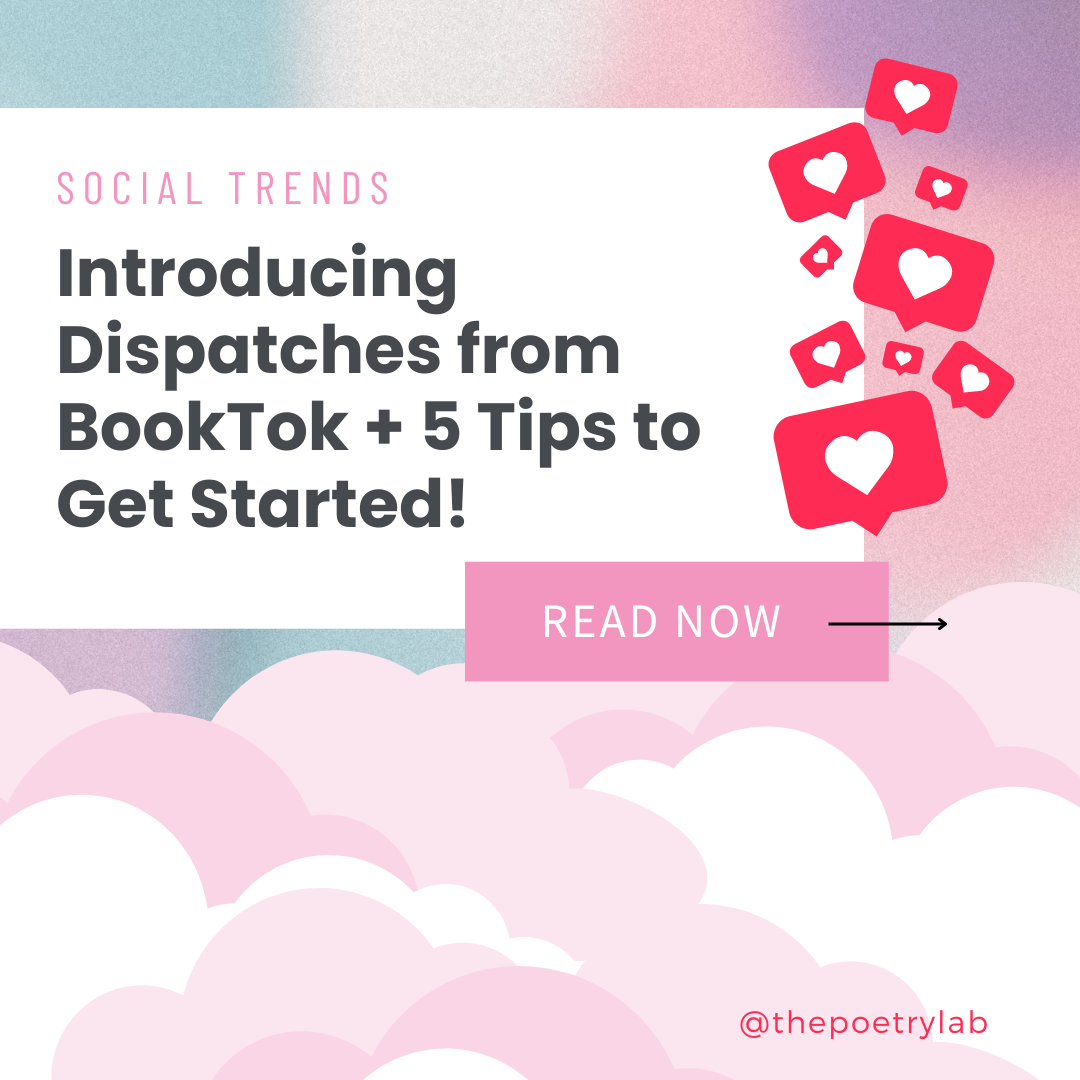How BookTok Can Open Everyone Up to Poetry
-
📘 Why Poetry Gets a Bad Rap
📗 Where TikTok Steps In➡ More by Kristen: 5 Tips to Get Started with BookTok
Hey poet! Welcome back to my series, Dispatches from BookTok. In my first post, I gave some tips on how to get your BookTok started. This month, I’m going to talk more about how BookTok can expand poetry’s accessibility.
A Public Makeover for Poetry
Poetry often gets a bad rap as being inaccessible. Although poetry readers briefly surged in 2017, readership has been in decline since. The National Endowment for the Arts reports that readership in 18-24 year olds declined by half between 2017 and 2022.
Although this is a demoralizing statistic, I choose to frame this differently. I see that it is possible to interest the public in poetry and that this appetite can be roused again.
TikTok creates a vital opportunity to both broaden people’s poetic horizons through showing them all the shapes poetry can take and by making a genre that has been largely insular more accessible.
As I’m sure you’re aware, poetry can be a deeply misunderstood art form. Honestly, it’s not the public’s fault. As a poet, BookToker, and teacher, I’ve noticed that the inaccessibility of poetry is largely due to two issues. The first is an access issue: people want to read more poetry but aren't aware of the websites and resources available or feel overwhelmed by where to start. The second is related to how poetry is often taught in secondary education, leaving many people with a negative impression.
Let’s talk about why poetry has become so misconstrued and how TikTok—yes, TikTok!!—can open everyone up to poetry.
Why Poetry Gets a Bad Rap
If you go to your local Barnes & Noble, the poetry section is maybe two or three shelves and usually consists of instapoets like Atticus or Rupi Kaur and the classics like Dante and Homer. Occasionally, you may find a couple of collections by Anne Carson or Terrance Hayes.
I’m not saying these selections are bad per se, but it is a narrow selection of poetry and reinforces to the public a limited perception of what poetry can be. An ideal poetry selection would include poets these bookstores already stock, plus smaller presses of books that have won awards or collections.
This feeds directly into the second issue of poetry’s inaccessibility.
Both on TikTok and speaking with family, friends, and students, poetry is often labeled as too simple or too opaque because of how they’ve been taught to read a poem. Show someone a poem by Mary Oliver, known for her clear observations on the natural world, such as “Hummingbirds,” and they’ll say it’s too “straightforward” to be considered a good poem.
Place a poem by John Ashbery, known for his abstract expressionism, in front of somebody, such as “Glazunoviana,” and they’ll read the first line before ultimately giving up, saying that the words don’t “make sense” and it can’t possibly “mean anything.”
Far too often, students are taught to approach a poem as if it is a cryptogram. They labor over what is being said and what hidden meaning lurks beneath. I’m reminded of a famous Billy Collins poem, “Introduction to Poetry,” where the speaker asks his students to, “walk inside the poem’s room/and feel the walls for a light switch,” only for it to end with students tying a poem to a chair to “beat the meaning out of it.”
Of course, poems can have “meaning,” but there’s so much more to a poem than its message. It’s like looking at Van Gogh’s “Starry Night” and calling it a painting of the night sky. Of course, you’re not wrong to call it a rendering of nighttime, but you are missing what makes Starry Night unforgettable. You miss the pinwheeled navy blurs stippled with starlight and how it defamiliarizes your idea of something as common as nighttime, instilling a new sense of wonder to something you encounter so regularly. What we think of the painting and how it impresses upon us is a crucial piece to “unlocking” it.
Similarly, poetry can be further enjoyed through appreciating the beauty of language, image, and sound.
When I taught poetry to college gen-ed literature students, I taught students to notice what parts of the poem jump out to them—whether it’s repetition, rhyme, or image—discuss how these parts make them feel, and then construct their understanding of the poem through an emotional lens.
Where TikTok Steps In
Whether you are an instructor wanting to make poetry more accessible or are a BookToker wanting to deepen and share your appreciation of poetry, here is a simple lesson plan you can use.
Poetry tends to be an embodied art form, meaning that it is often meant to not only be read on the page, but spoken aloud, listened to. It’s important to not only illuminate readers to this way of reading poetry, but to also model this reading approach.
This is where BookTok comes in. Lots of writers would call it blasphemy to lump poetry with TikTok, but the app is probably the only social media platform that can allow readers to fully experience all that poetry has to offer.
To demonstrate the embodied nature of poetry to my students, I would begin my class’s poetry unit with Richard Siken’s poem, “Litany in Which Certain Things are Crossed Out.” I would first read the poem aloud to the class and ask them to record their emotional reaction to the poem and write down phrases or sounds they noticed.
Next, I would ask my students to read the poem on the page and take note of any visual aspects–such as line breaks or the use of space–they felt was important to the poem. After listening to and reading the poem, we would then discuss how the poem made them feel; often, they would say the poem made them feel anxious or on edge.
I would ask them to take a look at their notes and ask them if there were any visual or sound elements that contributed to their emotional reaction. They would link the swerving lines, patches of white space, and anaphoras to the anxiety they felt in the poem.
When I asked my students what they thought of this approach to reading a poem, they said that it helped break down reading something that at first glance was intimidating to them.
This lesson can be easily tailored to TikTok. Like poetry, TikTok is both a visual and aural platform, making it the ideal social media platform to model this new (to them) approach of reading a poem.
Of course, unless you’re doing a TikTok live of this lesson plan, you will need to create content that is as engaging as if you were teaching this in real time.Here are a couple of additional tips to get you started:
✨ 1. Make it multimedia.
Post a picture of a poem you enjoy and think your audience would also enjoy. Record a voiceover of you reading the poem and, in the caption, ask your audience what they had noticed both visually and aurally in the poem and how they reacted to these observations.
✨ 2. Show your audience your favorite poem.
With the poem set as the green screen, read the poem aloud and then explain what you notice in the poem, how you reacted to each element, and then talk about how what you’ve noticed influenced your reaction and understanding of the poem.
For an example, check out this post I made on one of my favorite poems, “Elegy” by WS Merwin.
✨ 3. Give a taste of your own poetry.
If you want to show your audience the kind of poetry you write, post a poem that’s either already published or a rough draft. You can talk about what inspired this poem and talk about the creative choices you’ve made and also ask how they felt when reading and/or listening to the poem.
It’s an easy way to market yourself, something that we writers notoriously dread, but has become more of a necessity thanks to our increasingly digital publishing landscape.
Read the first article in this series here ⬇
This article was published on August 26, 2024. Written by:




